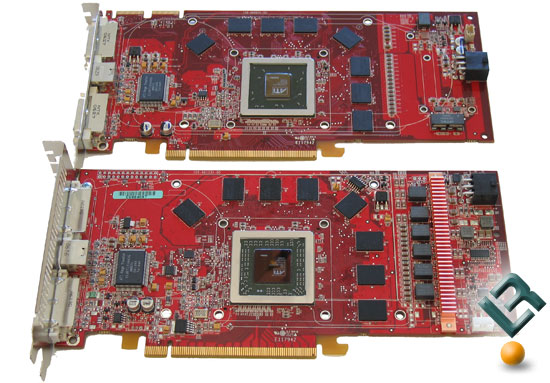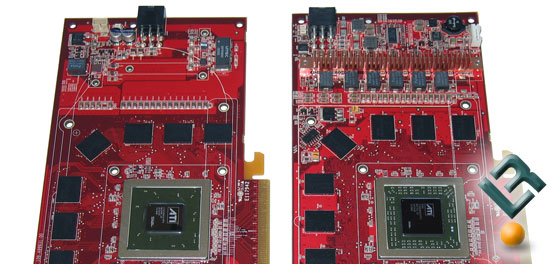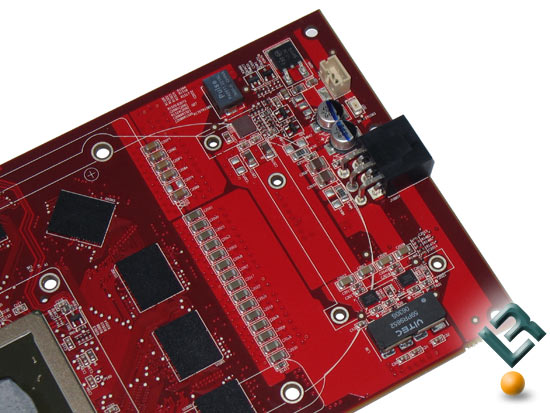ATI Radeon X1950 Pro CrossFire GPU Review
Goodbye Analog and Hello Digital PWM

When the ATI Radeon X1950 Pro was placed next to the Radeon X1950 XTX it was obvious that ATI changed a few things at the end of the card as the layout is much cleaner. This picture also shows the size differences on the cores and answers the question if the X1950 Pro and X1950 XTX share the same core as they obviously don’t.

The reason the PCB looks cleaner is because ATI was the first in the to use digital Pulse Width Modulation (PWM), a technology never seen before on high end desktop graphics cards. Digital controllers eliminate the dangers of overheating and exploding capacitors, giving users a safer and better monitored control over their video cards. By moving over to a digital PWM, ATI was able to save space on the PCB, but didn’t shrink the size of the card as they wanted to stick with good low noise cooling solution.

ATI and NVIDIA have been using analog signals up to this point and it hasn’t been a problem, but it’s been proven in the labs that digital signals are the way of the future. One of the disadvantages of an analog circuit is that they tend to drift with time and they are difficult to tune. Analog circuits are also usually hot and are sensible to noise. A digital signal is easier to implement, requires a smaller circuit, can be fine tuned, is easily reproducible, dissipates less heat, is immune to noise and weights less meaning that it is the best way to dial a graphics card in. ATI uses an RoHS compliant Multi-Phase SMD Coupled Inductor (part #59PR9852) by Vitec Electronics Corporation to make sure the digital signals are in check and hopefully enthusiasts will end up getting clean power.

Other than the move to digital PWM ATI has moved the heat sink fan power header to the top of the card and actually moved the additional +12V header down to the middle of the card. With that said the digital PWM is covered and we can move on to better things!

Comments are closed.